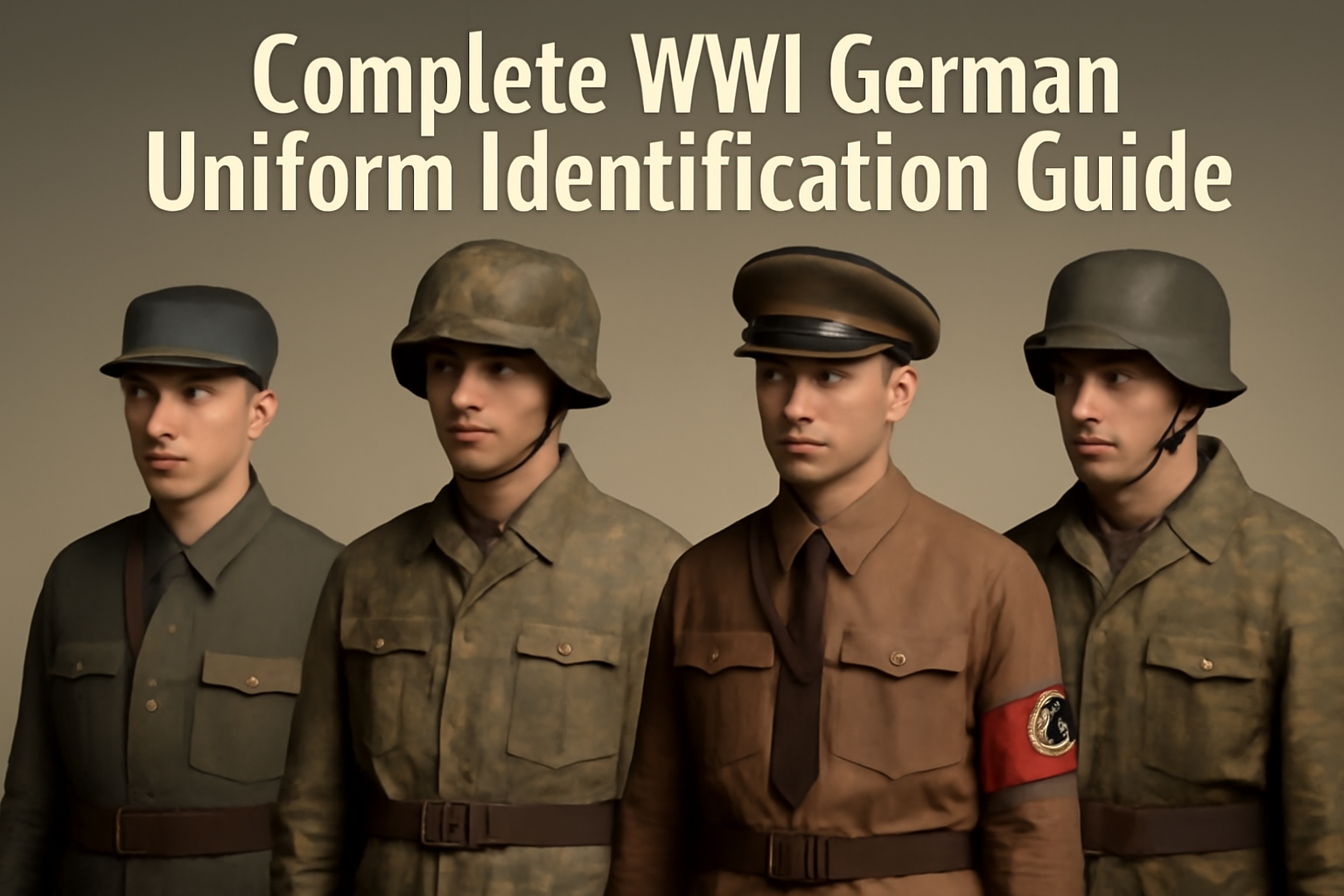
Complete WWII German Uniform Identification Guide: From German WWI Hats to Splinter Pattern & Camouflage Jackets
Published on May 30, 2025
WWII German Uniform Identification: A Complete Guide to Recognizing Historic German Military Apparel
Introduction
World War II German uniforms are among the most studied and collected military apparel globally. Their distinct styles, practical designs, and historical importance make them fascinating subjects. However, distinguishing between various uniforms, patterns, and eras can be tricky, especially when considering earlier influences from World War I.
In this guide, we'll dive into the essentials of WWII German uniform identification, focusing on the evolution from German WWI hats and caps to the iconic WWII splinter pattern, brownshirt uniforms, and German camouflage jackets. Whether you're a serious collector or just curious, this article will equip you with the knowledge needed to identify these historic uniforms accurately.
Understanding German WWI Caps and Hats: The Roots of WWII Uniforms
Before diving into WWII uniforms, it's important to understand their origins. The German WWI, particularly the German WW1 cap, laid the groundwork for later military headgear designs. These caps were typically made from field-grey wool with a distinctive shape and featured insignias such as the imperial eagle and cockade.
Collectors often seek after German WW1 caps for their historical value. These hats were practical, designed to shield soldiers from harsh weather while being easy to manufacture in large quantities. Notably, these caps influenced the design of WWII German headgear, which maintained a similar silhouette but introduced variations in insignias and materials.
If you're looking to identify authentic WWI hats, focus on the quality of wool, the stitching, and the insignia style, as reproductions often miss these finer details.
WWII German Splinter Pattern: The Iconic Camouflage Innovation
One of the most recognizable features of WWII German uniforms is the German splinter pattern camouflage. Introduced in the mid-1930s, this pattern marked a significant advancement in military textile technology.
The splinter pattern features sharp, angular shapes in a mix of greens, browns, and tan colours designed to blend soldiers into woodland and forest environments. This pattern was mainly used on field smocks and helmet covers.
Key points for identifying the splinter pattern:
- Look for crisp geometric shapes arranged in overlapping layers.
- Authentic uniforms use high-quality cotton fabric with durable stitching.
- This pattern was primarily worn by infantry and elite units, making original pieces highly collectable.
Many collectors confuse WWII splinter pattern items with later post-war camouflages. Still, the sharp edges and specific colour palette help distinguish authentic WWII-era gear.
The Brownshirt Uniform: Symbolism and Design
The brownshirt uniform is synonymous with the Sturmabteilung (SA), the paramilitary wing of the Nazi Party before and during the early years of WWII. Known as the "Brownshirts" due to their distinctive brown wool shirts, these uniforms served both a political and military function.
Identification features of the brownshirt uniform:
- Brown wool or cotton shirt, often with a pointed collar.
- Insignias such as the SA runes and swastika armbands.
- Simple, utilitarian design without the complex camouflage or field gear seen in regular army uniforms.
While the brownshirt uniform is not a combat uniform in the traditional sense, it played a crucial role in Nazi Germany's political landscape. Collectors should verify fabric texture and insignia authenticity when identifying these uniforms, as reproductions are common.
German Camouflage Jackets: Practicality Meets Innovation
German soldiers in WWII were among the first to adopt camouflage clothing on a large scale, with the German camouflage jacket becoming a key part of the Wehrmacht's field gear.
These jackets came in various patterns, including the famous splinter and dot patterns. Designed for versatility, they often featured multiple pockets, adjustable cuffs, and durable cotton fabric that could withstand the rigours of war.
Key characteristics for identifying genuine German camouflage jackets:
- Look for original pattern prints with subtle fading consistent with age.
- Check for authentic Wehrmacht or Waffen-SS markings, often sewn inside the jacket.
- Inspect the cut and stitching; wartime jackets were practical and sturdy, not overly decorative.
German camouflage jackets are highly prized by collectors and historians alike because they represent a significant step forward in military garment technology.
Tips for Collectors and Enthusiasts
- Research Provenance: Always ask for the history of the uniform or hat before purchase.
- Inspect Closely: Authentic WWII German uniforms have distinct markings, fabric quality, and wear consistent with their age.
- Avoid Fakes: Reproductions are widespread, so focus on sourcing from reputable dealers or verified collections.
- Understand Context: Knowing the specific use and period helps distinguish between German WWI hats and WWII uniforms.
Conclusion
Identifying WWII German uniforms requires a keen eye and a solid understanding of their historical context. From the German WWI hat roots to the advanced splinter pattern camouflage, brownshirt uniforms, and German camouflage jackets, each piece tells a story of innovation, strategy, and history.
Whether you're building a collection or fascinated by military history, mastering WWII German uniform identification is a rewarding journey. Keep this guide handy as your starting point for exploring one of the most iconic military apparel lineages in history.
